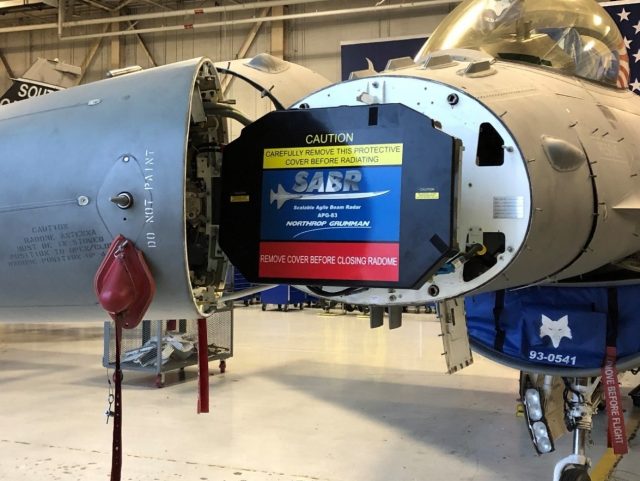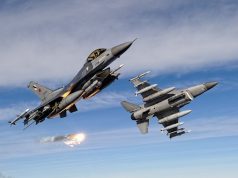The US Air Force has declared full operational capability (FOC) readiness for the AN/APG-83 SABR active electronically scanned array (AESA) radar on Air National Guard F-16 aircraft.
The radar upgrade will allow the aircraft to meet a US Northern Command Joint Emergent Operational Need (JEON) for homeland defense.
The new radar equips F-16s with radar capabilities similar to F-22s and F-35s. The system is used in the suppression or destruction of enemy air defenses, to include targeting radars and surface-air-missiles. It also improves existing air-to-air capabilities and enhances air-to-ground mapping.
The FOC milestone announcement comes after a four-ship formation of F-16s tested the new radar at Eglin air force base early July.
On September 7, the US Air Force began installation of APG-83 radars on Air National Guard F-16s at Joe Foss Field, Sioux Falls, South Dakota, the fourth US Air Force base to receive AN/APG-83 SABR AESA radar upgrades.
“SABR enables F-16 pilots to detect, track, identify and target a greater number of threats faster and at longer ranges from outside the threat envelope,” said Mark Rossi, director, SABR programs, Northrop Grumman. “This upgrade will keep the multirole F-16 fighter relevant and capable for decades to come.”
The AN/APG-83 features all-weather, high-resolution synthetic aperture radar mapping to present the pilot with a large surface image for more precise target identification and strike compared to legacy systems. As noted by Northrop Grumman, the radar manufacturer, the AN/APG-83 AESA is now an official program of record for both the active and reserve US Air Force as well as the Guard after the service procured units in February for Air Combat Command and Air Force Reserve F-16 aircraft.
The air force plans to fit 350 F-16s with the new radars as part of a service-life extension program (SLEP) that will allow the aircraft to remain in service at least until 2048.



























